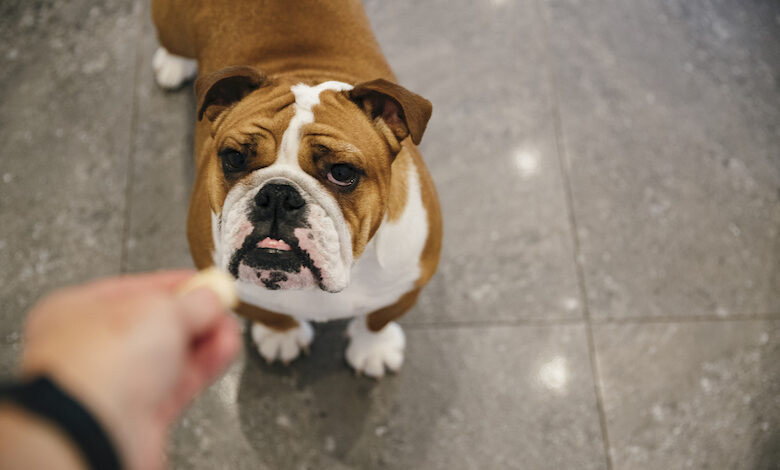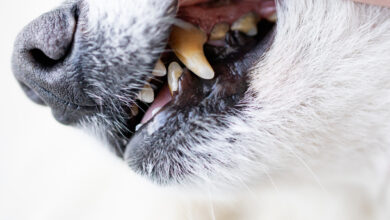
With the ever-increasing popularity of force-free, positive reinforcement-based training, more people than ever are feeding their dogs treats, and that’s a very good thing. Hopefully you are one of them. But did you know there are right ways and wrong ways to feed treats to your canine pal?
The “right” way can vary, depending on your training goals in the moment, but most commonly involves feeding the treat directly to your dog’s mouth. Even this is not as simple as it sounds. Feed a little too high and you’re likely to lure the dog to get up instead of holding the position you’re reinforcing her for. Feed the treat a lot too high and you might encourage her to jump up and/or grab to get it. Feed a little too low and she may think you’re asking her to lie down. Feed too close and you’re invading her space – she may back away from you. Feed too far away, or pull back as she reaches for it, and you can teach her to get grabby for treats as she lunges to follow it. Ouch!
A good general rule of thumb is to offer the treat a half-inch to an inch away from the dog’s mouth, right at nose level, and keep your hand still as she takes it from your fingers. However, it’s important to remember that each dog is an individual, and you may want to experiment a little with your own dog to determine where the best treat-feeding spot is for her, while keeping in mind the above caveats.
There are also times when you might choose to feed treats somewhere other than directly to the mouth. If you are working on attention, you can toss the treat on the ground to get your dog to look away from you, then invite her attention back with her name or a “Look!” cue, mark with a clicker or verbal marker when she looks, and feed the next treat by tossing it on the ground so you can cue the “Look” again. If you’re shaping a “go to mat” behavior, it’s helpful to toss the treat behind her after you click her for moving toward the mat so she “resets” and can move toward the mat again. And if you have a dog who is very sharky about taking treats (i.e. – leaves your fingers shredded) you can toss the treat on the ground just to save yourself from pain and bloody lacerations, until you teach her to take treats gently. Another finger-saving technique is to feed the treat from the palm of your hand as you would feed a treat to a horse. Alternatively, you can feed sticky treats (cheese, peanut butter) from the end of a wooden spoon to save your fingers, or make a soft dog food mush that you can squeeze from the ending of a dog training squeeze tube. (https://www.petexpertise.com/dog-training-food-tube/)
And yes, it is possible to teach your canine shark to take treats gently. I do not recommend the oft-repeated advice to “yelp like a dog” when your dog bites too hard. We aren’t dogs, and we never really know what we’re communicating when we try to pretend that we are. Plus, in my experience, a significant number of dogs just get more aroused when you start yelping. Instead, offer your dog a low-value treat in a closed fist, grit your teeth while she gnaws at your knuckles, and when her mouth finally softens a little, open your fist and feed the treat from the palm of your hand. (You can wear gloves for this, if necessary, to reduce wear-and-tear on your skin.) You can add a “gentle” or “easy” cue as you offer your close fist, and then use this cue as a reminder once she has learned to be soft, if you feel her reverting to taking treats with a hard mouth.
If you must say something, try a soft, calm “Ouch” to let your dog know she is hurting you. Over time and many repetitions, gradually wait for her mouth to get softer and softer before opening your fist, until she can routinely take even high-value treats appropriately. Be aware, though, that your reformed shark is very likely to revert to taking treats hard when stressed or excited, and even a soft-mouthed dog can give your fingers a resounding pinch when aroused! With time and practice, however, you and your dog can share a lifetime of appropriate treat delivery and soft-mouthed treat-taking.




